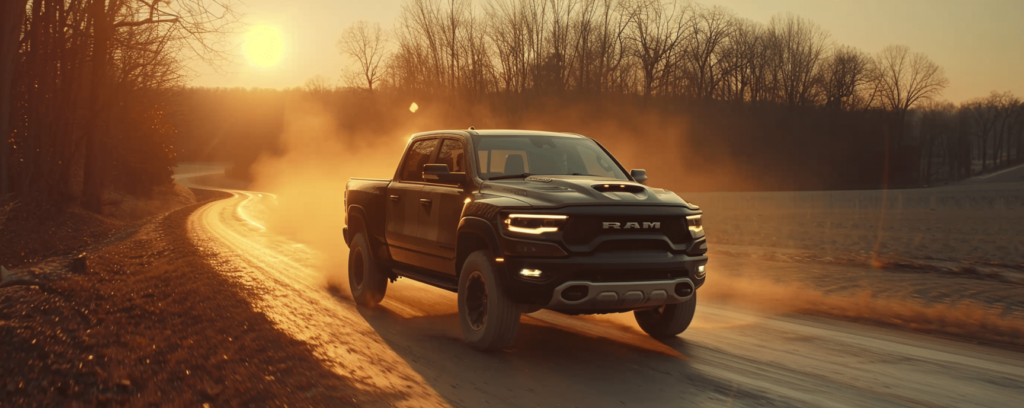Is It Legal to Ride in the Back of a Truck? – Explained
Last updated Friday, December 20th, 2024

Is it legal to ride in the back of a truck? The answer varies significantly by state, with some enforcing strict prohibitions and others offering conditional allowances. This guide demystifies the regulations across the United States so you can stay informed and lawful during your travels in a truck’s cargo area.
Key Takeaways
- The legality of riding in the back of a pickup truck varies by state, with some enforcing stringent restrictions based on age or specific conditions, while others allow it under certain circumstances.
- Safety concerns for riding in a truck bed are significant due to the lack of safety features like seat belts and airbags, leading to a higher risk of ejection and injury during accidents, particularly on rural roads and at high speeds.
- Child passenger safety laws are strict, with requirements for safety belts and booster seats based on age, weight, and height, and multiple states have specific age-related restrictions for children riding in pickup truck beds.
Exploring the Legality of Riding in a Pickup Truck Bed
The legality of riding in a pickup truck bed varies significantly across the United States. While some states have stringent laws prohibiting the transport of passengers in the cargo area of pickup trucks, others allow it under specific conditions. Safety is the primary concern driving these regulations, as the open cargo area of a truck lacks the protective features found in the cab, such as seat belts and airbags.
States like California, Connecticut, and Florida have laws that directly address this issue, with varying levels of restriction. For instance, California specifies equipment and enclosure requirements for legally riding in the back of a truck, while Florida has age-based restrictions. Comprehending these state-specific laws is key to maintaining compliance and safety.
State Examples
The patchwork of state laws regarding riding in the back of a truck can be confusing. In California and Colorado, specific equipment and enclosure requirements must be met for passengers to ride legally in the truck bed. For example, Colorado mandates that the cargo area be enclosed on all four sides. Florida, Maryland, and Ohio impose age-based restrictions, allowing only those above a certain age to ride in the back under specific conditions.
Hawaii and Pennsylvania have unique regulations that permit riding in the truck bed under special circumstances. In Hawaii, this is allowed if there are no available seats in the cab, while Pennsylvania permits it for parade participation.
States like Texas and Tennessee provide exceptions to the general prohibitions, allowing truck bed passengers during activities like:
- parades
- hayrides
- emergencies
- agricultural use
As each state operates under its own set of rules, you should verify local laws before deciding to ride in a truck’s cargo area. This variability reflects the diverse approaches to balancing safety concerns with practical needs.
Indiana’s Position on Truck Bed Passengers
In Indiana, the laws surrounding the transportation of passengers in a pickup truck bed are clear but strict. The state mandates that all vehicle passengers must be restrained with a safety belt, a regulation that extends to those riding in the bed of a pickup truck. The purpose of this law is to mitigate the risk of injury or death during an accident, given the cargo area’s lack of protective features, which are typically found in the cab.
Indiana’s seat belt law is particularly stringent when it comes to children. All passengers aged 12 and under should ideally ride in the back seat of a vehicle if it’s available, and those under 8 must be secured in a child safety seat or booster seat. These regulations underscore the state’s commitment to passenger safety.
Exceptions and Special Circumstances

In Texas, exemptions include farm operations, parades, and emergency situations. People over 18 can legally ride in the bed of a pickup during parades, hayrides, on beaches, or in emergencies, as long as safety regulations are followed. California also permits riding in the back during parades at speeds not exceeding 8 miles per hour and during emergencies.
These exceptions highlight the flexibility of state laws to accommodate practical needs and cultural practices while still prioritizing safety. However, violators in some states, like California, who fail to use federally approved restraint systems when riding in the back may face legal consequences, except during farming activities or parades at limited speeds.
Safety Concerns with Truck Bed Travel
Riding in the cargo area of a pickup truck is inherently risky. The lack of seat belts and other safety features makes passengers vulnerable to severe injuries or fatalities in the event of an accident. The risk of ejection is significant during sudden stops or collisions, and passengers are also exposed to road elements like rain, debris, and dust.
Furthermore, rural roads pose an additional danger due to higher speed limits and limited access to emergency services. The open cargo area offers no protection against these hazards, making it an unsafe option for transportation. Given these risks, it is generally advised against transporting passengers in the bed of a truck.
Seat Belts and Safety Equipment
The absence of seat belts and safety equipment in truck beds is a major safety concern. Unlike the cab of a vehicle, cargo areas lack crash protection features such as crumple zones, airbags, and seat belts. This significantly increases the likelihood of severe injuries or fatalities during an accident in the cargo area.
Seat belts are critical in mitigating injury risk as they distribute crash forces across the stronger parts of the body, offering a degree of protection. However, the lack of seat belts in truck beds means passengers are at a higher risk of being ejected during crashes or rapid deceleration.
The Risk Factors
Several risk factors contribute to the dangers of riding in a truck bed. High-speed travel on country roads increases the risk of accidents, with over 200 individuals, mostly children and teenagers, dying annually as a result. Ejection from the bed during an accident is the primary cause of injuries and fatalities among pickup truck passengers.
Sudden maneuvers such as sharp turns, stops, or unexpected movements like hitting bumps can significantly increase the danger of riders falling from a truck bed. Most non-collision deaths in the cargo area occur from passengers falling due to a sudden stop or swerves, especially when they are in precarious positions.
Child Passenger Safety and Legal Restrictions
Child passenger safety is a critical aspect of vehicle regulations, especially when it comes to riding in truck beds. Indiana, for instance, requires all passengers to be restrained with a safety belt, and children under 8 must use a child safety seat or booster seat. These laws aim to safeguard young passengers, who are exceptionally susceptible to harm in case of an accident.
In addition to seat belt laws, age-specific regulations are also in place. For example, children 12 and under should ride in the back seat if available, and those under 8 must be secured in a child safety seat or booster seat. These initiatives are designed to boost the safety of child passengers, not only in pickup trucks but in all vehicle types.
Booster Seat and Safety Belt Laws
Booster seat and safety belt laws vary across states but generally follow a progressive approach based on a child’s age, weight, and height. Nearly all states require children who do not fit properly into adult seat belts to ride in booster seats or other appropriate safety seats. These laws typically progress through stages, starting with rear-facing seats, moving to forward-facing seats with harnesses, and finally to booster seats.
Specific states like Ohio, New Hampshire, Kentucky, and Virginia have distinct height, weight, and age limits for when children must use safety seats and booster seats. Booster seats must be used with both lap and shoulder belts for maximum protection.
Age-Specific Regulations
Age-specific regulations for riding in truck beds differ from state to state. In Florida, individuals aged 18 and older may ride in the back of a pickup truck, while those 17 and younger are allowed only under specific conditions. In North Carolina, children 15 and under can ride in truck beds if they are supervised by an adult and use seat belts.
Maryland permits younger children, 15 years or under, to ride in a truck bed if the vehicle’s speed is 25 mph or less, while Tennessee allows those aged 6-11 on roads other than interstates or state highways. These age-specific regulations are crucial for ensuring the safety of young passengers.
Transporting Pets in Pickup Trucks

Unsecured transportation of pets exposes them to various risks, including:
- potential carbon monoxide poisoning if the vehicle is equipped with an exhaust system that directs gasses toward the cargo area
- injury from sudden stops or accidents
- escape or getting lost during transit
Maintaining pet safety during transport in a motor vehicle holds equal importance to passenger safety.
State Law Variances for Pet Transport
State laws regarding pet transport in pickup trucks vary widely. States like California, Connecticut, Maine, Massachusetts, New Hampshire, and Rhode Island have specific regulations that address this issue. For instance, New Hampshire and Massachusetts have detailed laws about the transport of pets, including requirements for vertical vehicle side height and methods of restraint for the animal.
In contrast, some states have more lenient laws or no specific regulations at all, relying instead on broader animal anti-cruelty laws or ‘cruel transport laws’ to cover such activities. Given this variability, it’s vital for pet owners to familiarize themselves with local laws to ensure both compliance and their pets’ safety.
Protecting Your Pet
To protect pets during transport in a truck bed, certain safety measures should be taken. Here are some tips to ensure their safety:
- Use enclosures to keep your pets contained and prevent them from jumping out of the truck bed.
- Use restraint harnesses to secure your pets and prevent them from moving around too much.
- Install side and tail racks to provide a barrier and prevent your pets from falling out of the truck bed. By following these safety measures, you can ensure that your pets are protected during transport.
Properly securing pets not only reduces the risk of distraction to the driver but also prevents injury to the pet. Adhering to these safety measures can pave the way for a safer trip for both the pet and the driver.
Penalties for Non-Compliance
Non-compliance with laws regarding passengers and pets in pickup truck beds can result in significant penalties. Violations of child passenger safety laws can incur fines ranging from $10 to $500, and may also lead to driver’s license points being assigned. These penalties emphasize the importance of compliance with safety regulations.
For pet transportation, drivers may face misdemeanor charges if pets are not secured properly in the truck bed. Additionally, if a pet obstructs the driver’s view or is deemed a distraction, it could result in fines or citations for distracted or unsafe driving.
Best Practices for Pickup Truck Riders
Ensuring the safety of passengers and pets in pickup trucks involves following best practices. Passengers should not ride in the cargo area of a pickup truck, even if it is covered, due to the risk of ejection and exposure to exhaust fumes. When using child safety seats, the base must occupy at least 80% of the bench seat, and a tether strap should be used to prevent excessive forward movement during an accident.
It’s also recommended to refer to the vehicle owner’s manual for specific safety guidelines and best practices concerning child safety seats and passenger transport. These practices can significantly enhance safety for all passengers in pickup trucks.
Frequently Asked Questions
Is it legal to ride in the back of a pickup truck in Indiana?
No, it is not legal to ride in the back of a pickup truck in Indiana due to safety regulations. It is recommended that all passengers be restrained with a safety belt and children 12 and under should ride in the back seat if available.
What are the penalties for not complying with child passenger safety laws?
Failing to comply with child passenger safety laws can lead to fines between $10 and $500, along with potential points being added to your driver’s license. Be sure to follow these laws to avoid penalties.
Are there any exceptions to riding in a truck bed in Texas?
In Texas, there are exceptions for farm operations, parades, hayrides, and emergencies, during which people over 18 can legally ride in the bed of a pickup as long as safety regulations are followed.
What safety measures should be taken when transporting pets in a pickup truck?
When transporting pets in a pickup truck, it’s crucial to use enclosures, restraint harnesses, and adequate side and tail racks to protect them from weather conditions, and road debris, and to minimize distractions for the driver. These measures help ensure the safety of your pets during transportation.
Are seat belts required in the cargo area of a pickup truck?
It is highly unsafe to transport passengers in the cargo area of a pickup truck due to the lack of seat belts and other safety features. It is generally advised against doing so to prevent the risk of ejection and injury.










